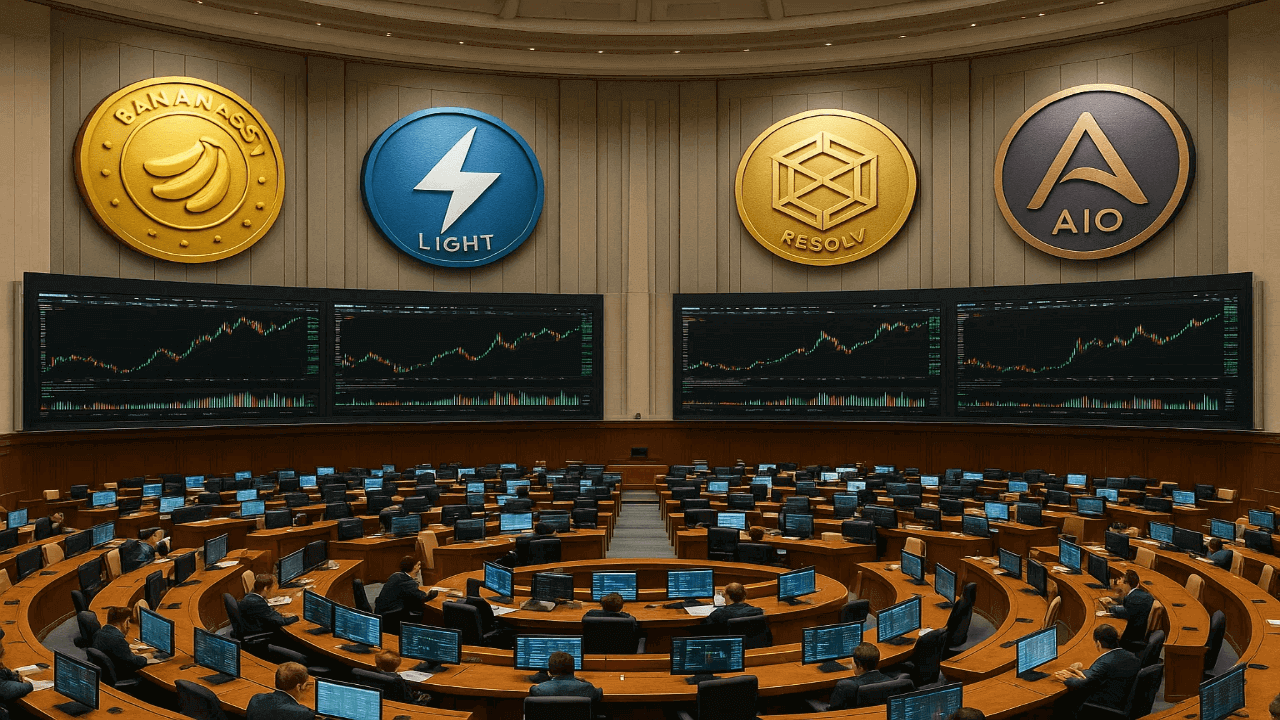Introduction
The rapid development of AI technology has led to a sharp increase in chip demand, and semiconductor stocks, led by Nvidia, have also skyrocketed.
As an experienced stock trader, I have been observing and tracking the semiconductor industry and have compiled a list of the best semiconductor stocks. The global demand for chips is still growing, and semiconductor stocks have enormous growth potential.
If you are interested in investing in semiconductor stocks, you can check out this list of the best ones I provide. I hope it can help you make a smarter investment choice.

How Will Semiconductor Companies Perform in 2025?
So, how will semiconductor companies perform in 2025? Based on my observations and analysis, I believe that the semiconductor industry is expected to perform strongly in 2025. There are several key reasons:
The demand for AI and HPC continues to rise
According to IDC's report, as the global demand for artificial intelligence (AI) and high-performance computing (HPC) continues to rise, the global semiconductor market is expected to grow by 15% by 2025. AI-related chips such as GPUs and high bandwidth memory (HBM) are expected to experience significant growth.
Leading companies and innovation
The continuous innovation of some leading companies will drive the entire semiconductor industry. For example, Nvidia's continuously upgraded AI chips and TSMC's promotion of adopting 2nm manufacturing processes.
More extensive market trends
Policies have been introduced in regions such as the United States, China, and Europe to promote the localization of semiconductor production. This extensive investment in semiconductor manufacturing helps to boost confidence throughout the entire semiconductor supply chain.
Criteria for Selecting Semiconductor Stocks
- Market Capitalization: Only large-cap and mega-cap companies are included, as these tend to be more stable and established, making them attractive for long-term investments.
- Technology/Market Position Advantage: Prioritize companies with wide-moat competitive advantages in semiconductor segments. Because such companies have lower investment risks.
- Analyst Consensus: Stocks with analysts' Strong Buy or Moderate Buy ratings are prioritized, reflecting positive sentiment and confidence in their future performance.
- Significant R&D investment: Priority should be given to companies that continue to invest heavily in R&D to demonstrate their emphasis on innovation.
Best Semiconductor Stocks to Buy
Company | Ticker | Market cap | Advantage | R&D/Revenue |
Nvidia | 3.49 T | Dominate the GPU market | 14.3% | |
Taiwan Semiconductor Manufacturing | 1.15 T | Dominate the chip foundry industry | 7.05% | |
Broadcom | 1.15 T | Leading in network chips, data centers, IoT, etc. | 18.04% | |
ASML Holding | 288.08 B | Monopolize the lithography machine market | 16.78% | |
Advanced Micro Devices | 199.35 B | Nvidia's strong competitor | 26.17% | |
Arm Holdings | 170.81 B | Monopolize smartphone processors | 61.21% | |
Intel | 89.84 B | Leading the processor market | 41.1% |
Nvidia (NVDA)
Advantages
- Market positioning: Nvidia is a global leader in GPU and AI technology. Despite the expected decline in demand for AI chips in the short term, Nvidia's future growth potential remains enormous, given its strong market position and ability to continue innovating.
- Business diversification: In addition to chips, Nvidia has also invested in areas with growth potential, such as healthcare and robotics. These efforts will help Nvidia reduce its reliance on a single industry.
- Analyst sentiment: Analysts welcome Nvidia's leading position in the field of artificial intelligence chips. According to Intellectia's data, in the past 12 months, 40 analysts have updated their ratings on Nvidia, with 37 giving a "Buy" rating.
Risks
- Overvaluation: Nvidia's P/E ratio is 54, far higher than the average P/E ratio of 30 for the S&P 500 index, indicating that Nvidia is at risk of being overvalued.
- Market expectations and sentiment: Nvidia's stock price is highly sensitive to market sentiment. Despite the lucrative profits, the stock will face selling when its performance fails to meet high expectations.
Taiwan Semiconductor Manufacturing (TSM)
Advantages
- Market position: TSMC is the world's largest semiconductor foundry. According to market research firm Counterpoint, as of the third quarter of 2024, TSMC's market share was as high as 64%, well ahead of second-place Samsung (12%) and third-place SMIC (6%). This strong market position greatly reduces its competitive risk.
- Technology advantage: Compared to its competitors, TSMC maintains a leading position in both advanced processes (2nm/3nm) and packaging (CoWoS).
- Analyst sentiment: According to Intellectia, six analysts have updated their ratings on TSMC in the past 12 months, five of which have "buy" ratings.
Risks
- Geopolitical risk: TSMC's business is concentrated in Taiwan. Any change in Taiwan's relations with China could have an impact on TSMC's production and investor sentiment.
- Customer concentration: A few large customers, such as Apple and Nvidia, contribute the majority of TSMC's revenue. The high concentration of customers has weakened TSMC's ability to resist risks.
Broadcom (AVGO)
Advantages
- AI-related growth: AI-related business is an important growth driver for Broadcom. Thanks to AI processors built for large customers, revenue from Broadcom's AI-related businesses grew 220% to $12.2 billion in fiscal year 2024, nearly half of its semiconductor revenue.
- Cooperation with Apple: There have been recent reports that Apple has transferred some of its business from Skyworks Solutions to Broadcom, which will increase Broadcom's revenue from Apple-related products. In addition, Broadcom will cooperate with Apple to develop server chips designed for AI processing, which will enhance Broadcom's competitiveness in AI chips.
- Analyst sentiment: Analysts are very positive about Broadcom, according to Intellectia. Over the past 12 months, 26 analysts have updated their ratings on Broadcom, with 23 giving it a "Buy" rating.
Risks
- Overvalued: Broadcom's forward P/E of 36.6 indicates that the stock is trading above expected growth. If future growth expectations are not met, share prices are prone to a correction.
- Reliance on the AI business: While Broadcom's AI revenue grew 220% in the fourth quarter of 2024, the company's overall growth rate was only 11%. This heavy reliance on AI growth could pose risks if the AI market slows or competition intensifies.
- The risk of buying VMware: In 2024, Broadcom acquired virtualization software company VMware for $69 billion. A high-priced acquisition and integration of VMware would pose potential risks to Broadcom's financial position.
ASML Holding (ASML)
Advantages
- Market monopoly: Extreme ultraviolet (EUV) lithography machines are essential for producing advanced chips for AI applications, and ASML is the only company in the world that produces EUV lithography machines.
- Technological progress: ASML's new high-NA EUV technology is expected to be its main growth driver. This technology simplifies the manufacturing process and reduces costs and defects. With the widespread adoption of this technology, ASML's dominance in the lithography market will be further consolidated.
- Analyst sentiment: Intellectia data shows that 5 analysts have updated their ratings on ASML in the past 12 months, all of which have given a "Buy" rating.
Risks
- Geopolitical factors: Geopolitical factors have a great impact on ASML. For example, the Trump administration's chip export restrictions on China will cause ASML to lose China, a major market, which will in turn harm its financial condition.
- Lack of diversification: ASML's revenue mainly comes from lithography machines, which makes it more vulnerable to industry cyclicality. A recession or slowdown in growth in any industry could have a significant impact on its performance.
Advanced Micro Devices (AMD)
Advantages
- Cost-effective: AMD's products, such as Ryzen processors and Radeon GPUs, are known for their high cost-effectiveness. Recently, DeepSeek's low-cost AI model has attracted a lot of attention. In this case, the demand for low-cost chips could increase and boost demand for AMD products.
- Business diversification: In addition to AI chips, AMD's business also includes data centers, gaming, and client computing. This diversification helps reduce risk.
Risks
- Competitive risk: AMD plans to launch MI350 Gpus in mid-2025 to gain a larger market share. However, Nvidia's dominance in GPU space remains a big challenge for AMD.
- Analyst sentiment: Analysts are cautious about AMD's outlook. According to Intellectia, 23 analysts have updated their ratings on AMD in the past 12 months, with 14 giving them a "Buy" rating and one giving them a "Sell" rating.
ARM Holdings (ARM)
Advantages
- Dominance in the mobile and IoT markets: ARM's processor designs power more than 99% of the world's smartphones and is widely used in IoT devices. This widespread adoption ensures ARM's market leadership.
- Flexible licensing model: ARM's licensing model allows partners to customize their designs, promoting innovation across industries. The model brings ARM stable and considerable licensing fees and patent fees.
- Analyst Sentiment: According to Intellectia, a total of 18 analysts have updated their ratings on ARM in the past 12 months, with 14 of them giving it a “Buy” rating.
Risks
- Dependence on the Smartphone Market: ARM derives a significant portion of its revenue from the smartphone market, which is facing headwinds due to slowing demand. This reliance makes the company vulnerable to cyclical downturns in the mobile industry.
- Valuation Risk: ARM appears overvalued compared to its peers. The stock trades at a forward P/E ratio of 219.20, and EV/EBITDA is significantly above the industry average. This overvaluation could limit upside potential and increase downside risk if market sentiment changes or growth expectations are not met.
Intel (INTC)
Advantages
- Investment in advanced manufacturing processes: Intel is increasing its investment in advanced manufacturing processes, such as Intel's 18A node. Once the technology is successfully applied, it will help Intel gain technological leadership and enhance its competitiveness.
- Artificial intelligence and foundry expansion: Intel plans to enhance its competitiveness in the field of AI by strengthening strategic partnerships, such as custom chip design with Amazon Web Services. In addition, Intel is expanding its foundry business, which has received approximately $8.5 billion in funding from the US government. These initiatives are expected to drive Intel's long-term growth.
- Cost reduction plan: To improve its financial situation, Intel is implementing a cost reduction plan, including business restructuring and layoffs. Intel expects to cut costs by $10 billion by the end of 2025.
Risks
- Manufacturing risks: Intel's 18A process node technology is critical to its foundry business and product line. However, as Intel's financial situation deteriorates, investors are concerned about whether Intel can continue to invest in this technology.
- Insider selling and analyst sentiment: More than 50 insiders recently sold their shares, reflecting their lack of confidence in the company's future. According to Intellectia, 30 analysts have updated their ratings on Intel in the past year, with 25 giving it a "Hold" rating and none recommending a "Buy."
Conclusion
In general, the six semiconductor stocks mentioned above are all good investment targets. If you want to invest in semiconductor stocks with relatively low risks, I suggest you consider Nvidia, TSMC, and ASML, whose strong competitive advantages can reduce risks. Intel may be an option to get a high return on investment for someone don't mind taking higher risks.
If you are looking for semiconductor stocks with moderate risk and growth potential, I suggest you consider Broadcom, AMD, and ARM. They are all leading semiconductor companies and are increasing their investments in AI. As AI technology prospers, they are expected to achieve good growth.
I have been using the AI analysis tool, Intellectia, for stock analysis and price prediction over the past year, and I am impressed by its professional technical analysis. If you are a beginner, I recommend that you use Intellectia to conduct a comprehensive analysis of stocks before investing, which will help you make more informed decisions.
Frequently Asked Questions
Will semiconductor stocks do well in 2025?
Semiconductor stocks are expected to continue their good performance in 2025. Reasons for optimism include the prosperity of artificial intelligence, the increasing demand for Internet of Things (IoT) devices, and significant investment in semiconductor infrastructure, among others.

Which semiconductor company pays the biggest dividend?
According to Dividend.com, as of January 2025, United Microelectronics Corporation (UMC) leads with a forward dividend yield of 8.15% and distributes an annual dividend of $0.46 per share.
Which is the fastest-growing semiconductor company?
With its leadership in artificial intelligence and data centers, Nvidia has been the fastest-growing semiconductor company in the past two years. In 2024, its stock price soared by 194%, surpassing that of other semiconductor companies.










